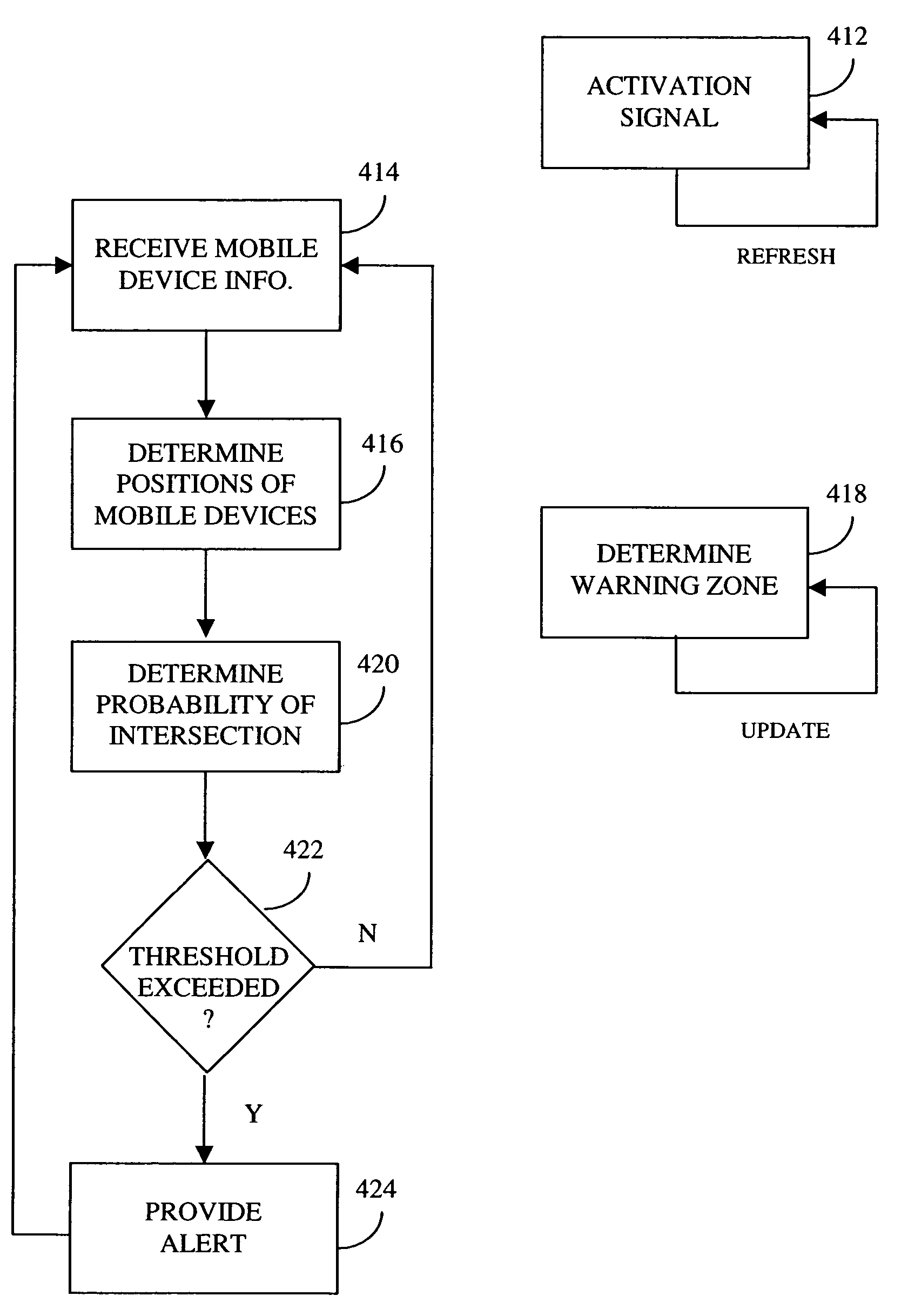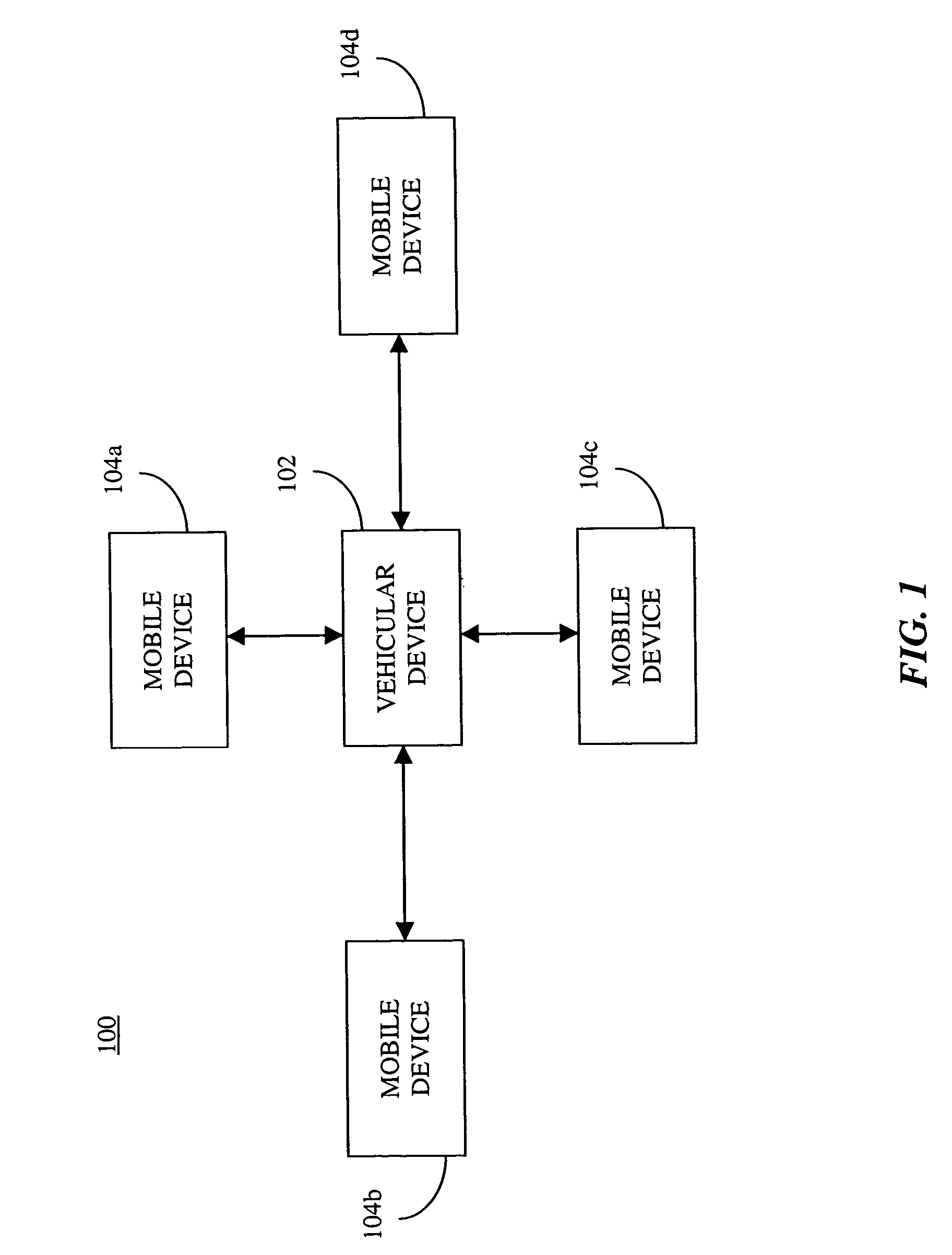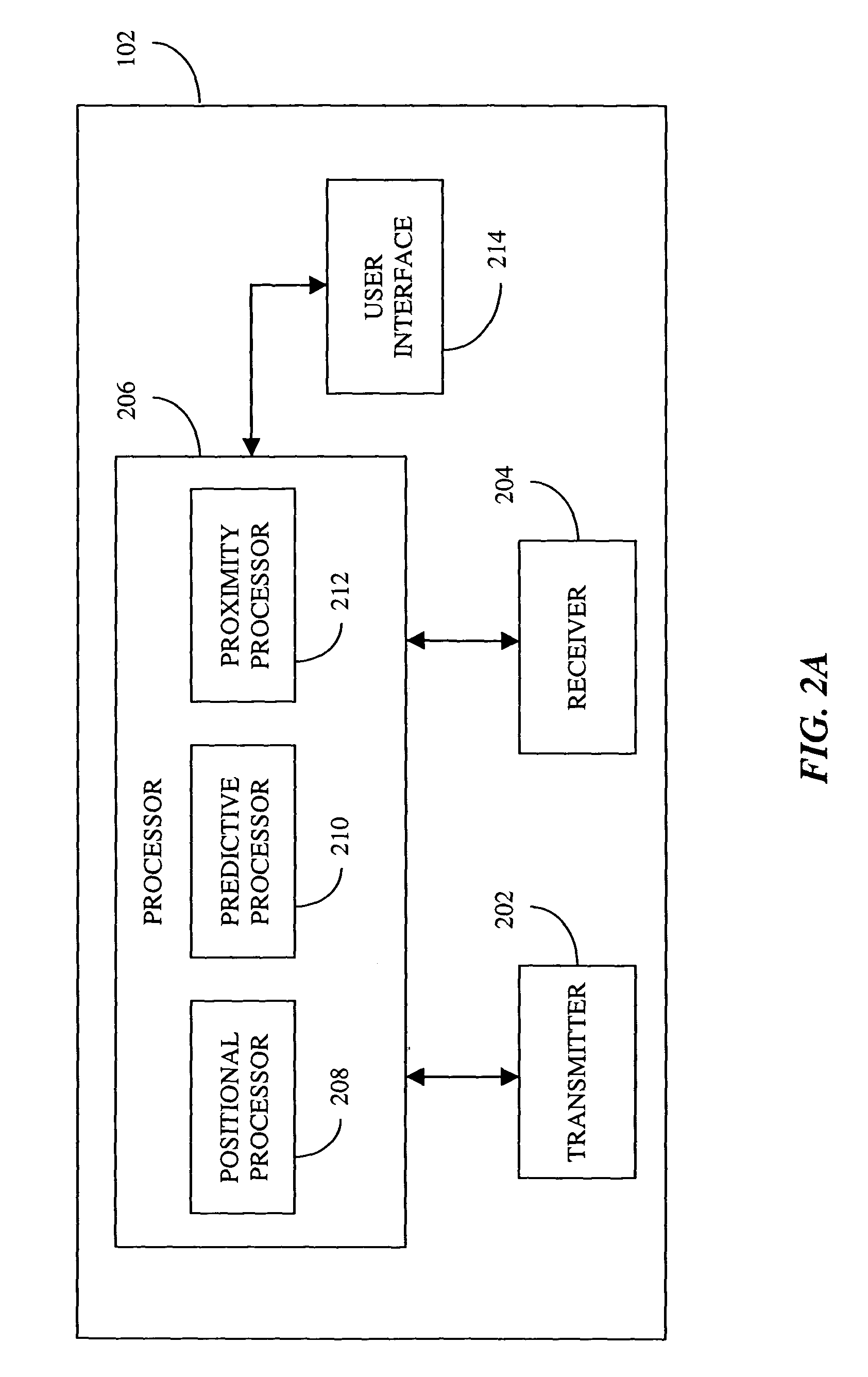System and method for providing pedestrian alerts
- Summary
- Abstract
- Description
- Claims
- Application Information
AI Technical Summary
Benefits of technology
Problems solved by technology
Method used
Image
Examples
Embodiment Construction
[0038]To facilitate an understanding of the principles and features of the invention, it is explained hereinafter with reference to its implementation in one or more illustrative embodiments. In particular, the invention is described in the context of a system and method for providing pedestrian alerts. More specifically, the invention is described in the context of a system and method for providing vehicle operators or motorists with alerts regarding potential collisions with pedestrians. The invention also can provide pedestrians with alerts or warnings of potential collisions.
[0039]According to an embodiment of the invention, a method is provided that includes transmitting an activation signal. A signal, which is generated by a remotely located mobile transmitter in response to the activation signal, is received. The location of the remotely located mobile transmitter that has generated the received signal is determined. Based on a set of predetermined rules, a prediction is made...
PUM
 Login to View More
Login to View More Abstract
Description
Claims
Application Information
 Login to View More
Login to View More - Generate Ideas
- Intellectual Property
- Life Sciences
- Materials
- Tech Scout
- Unparalleled Data Quality
- Higher Quality Content
- 60% Fewer Hallucinations
Browse by: Latest US Patents, China's latest patents, Technical Efficacy Thesaurus, Application Domain, Technology Topic, Popular Technical Reports.
© 2025 PatSnap. All rights reserved.Legal|Privacy policy|Modern Slavery Act Transparency Statement|Sitemap|About US| Contact US: help@patsnap.com



